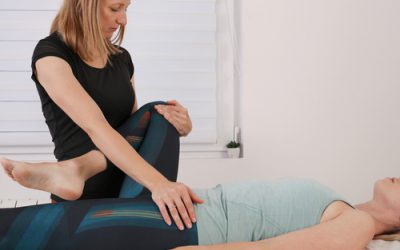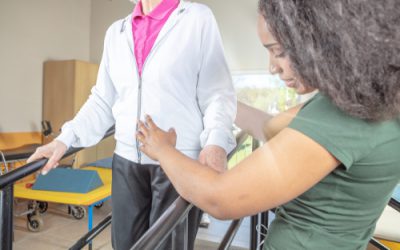Hip and Knee Pain
At Back in Motion Physical Therapy, our focus is to change people’s lives by providing pain relief and improving their quality of life.
Hip and
Knee Pain
Hip and knee pain can have a significant impact on a person’s quality of life. The hips and knees are used daily in activities such as sitting, standing and walking. If hip or knee pain develops, these activities can become almost impossible to endure. Without the ability to sit, stand or walk comfortably, a person’s quality of life can drastically decline. If you are experiencing hip or knee pain, take a moment to read through the common causes of this pain and find out what treatment options are available to you.
Can I treat my own knee and hip pain?
There are certain actions that can be taken on your own to help deal with your hip or knee pain. Ice is a great way to reduce pain and swelling. Also, a knee brace can be worn to help stabilize the knee joint. It is important to note that a brace will not increase the strength of the muscles surrounding the joint. This could potentially make the patient reliant on the knee brace for stabilization.
What are the risk factors for hip and knee pain?
There can be a large genetic component when it comes to determining whether a patient may need hip or knee treatment. Pain in the knee or hip is often cause by the natural degeneration of the joint, which can cause inflammation and nerve compression. A pinched nerve can lead to chronic pain or sometimes to sporadic pain during certain movements. Also, athletes who are required to make a lot of lateral movements such as tennis, basketball and soccer players are more likely to tear a ligament in the knee. Other factors like muscle weakness or tightness, imbalance, and lifestyle can become a risk for developing chronic pain in the knee or hip joints.
Therapy treatment options for knee and hip pain
The most common courses of treatment for knee and hip pain are centered on physical therapy. Physical therapy can help to restore the strength and mobility within the damaged joint. In the case of surgery, physical therapy is often beneficial during post-op recovery to help gain movement in the hip or knee. The patients who diligently follow the strength and flexibility exercises after a complete joint replacement find that they recover quicker, retain a greater range of motion and regain a higher quality of life than patients who did not follow the rehab program as strictly or for those who did not participate in any meaningful rehab after their procedure. Hip and knee pain comes in many different forms. Regardless of whether you have arthritis, a torn ligament or are recovering from a complete joint replacement surgery, the expert physical therapists of Back in Motion Physical Therapy are here to help. If you suffer from hip or knee pain or are considering a joint replacement and need a facility in which to do the post-op rehab, Back in Motion Physical Therapy can assist! Contact one of our patient coordinators today to set up your initial appointment and see which treatment options may be right for you. We have center and branch locations in Gorham, South Portland, Portland, Newport, Bangor, Brewer, Ellsworth, Waterville and Auburn, Maine to better serve your needs.
How can physical therapy help with hip bursitis?
Feeling pain at the point of your hip? Does it extend into the outside of your thigh? If you answered yes to these two questions, you likely have a condition called hip bursitis. It’s estimated that 15% of women and 8.5% of men develop bursitis in one of their...
The role of physical therapy in hip replacement surgery recovery
Total hip replacements aren’t entered into lightly. Often, other treatment options have been tried, but they haven’t been able to reduce symptoms. In this case, many patients will opt for a hip replacement surgery. Many of the patients who end up having hip...
Four benefits of physical therapy for a hip labral tear
Pain in your hip after standing or sitting for a long time. A catching sensation when you move your hip. Unexplained hip stiffness. All these symptoms are common to a condition known as a hip labral tear. The hip labrum is a ring of cartilage that coats the outer rim...



